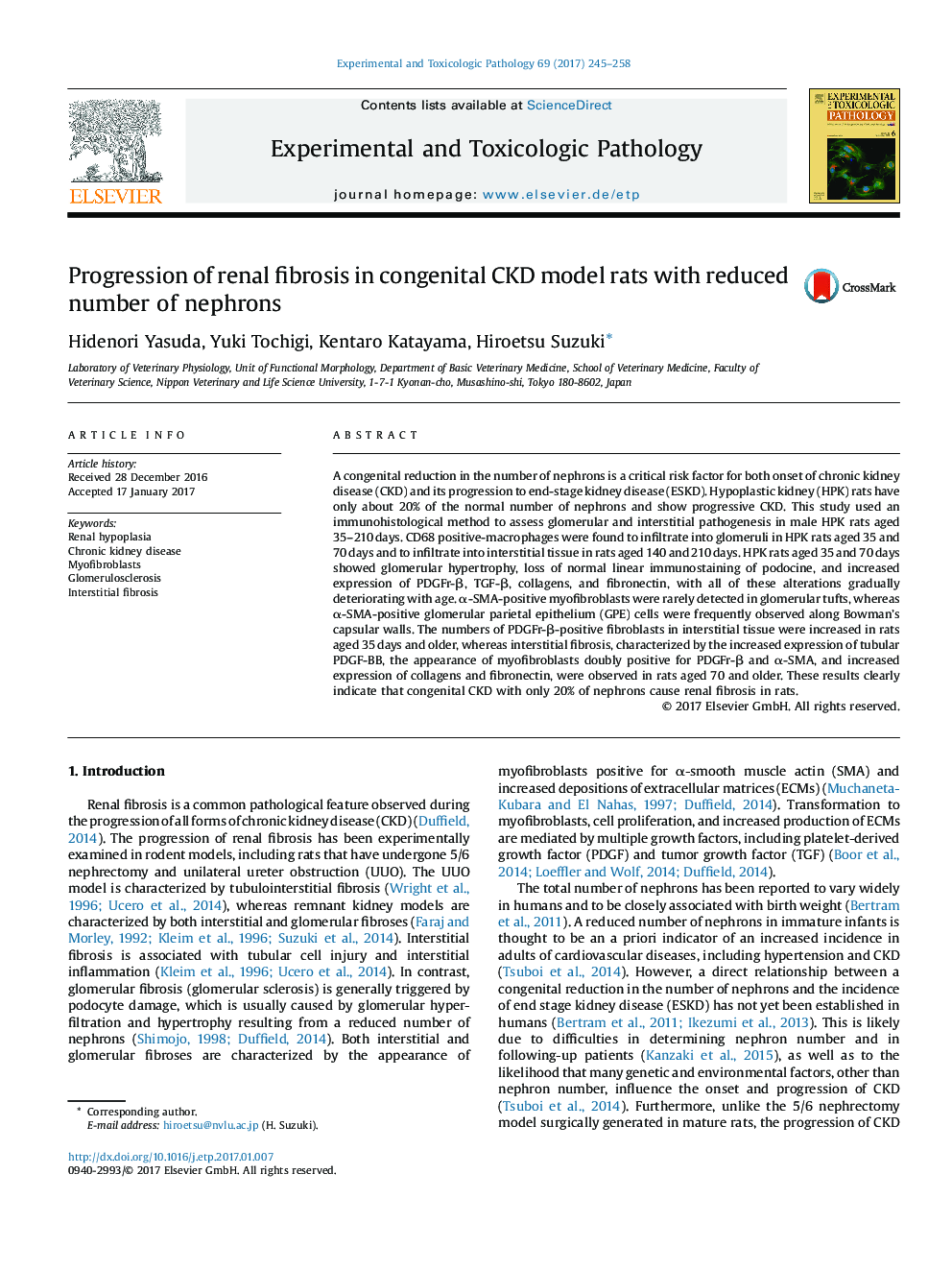| Article ID | Journal | Published Year | Pages | File Type |
|---|---|---|---|---|
| 5549750 | Experimental and Toxicologic Pathology | 2017 | 14 Pages |
A congenital reduction in the number of nephrons is a critical risk factor for both onset of chronic kidney disease (CKD) and its progression to end-stage kidney disease (ESKD). Hypoplastic kidney (HPK) rats have only about 20% of the normal number of nephrons and show progressive CKD. This study used an immunohistological method to assess glomerular and interstitial pathogenesis in male HPK rats aged 35-210 days. CD68 positive-macrophages were found to infiltrate into glomeruli in HPK rats aged 35 and 70 days and to infiltrate into interstitial tissue in rats aged 140 and 210 days. HPK rats aged 35 and 70 days showed glomerular hypertrophy, loss of normal linear immunostaining of podocine, and increased expression of PDGFr-β, TGF-β, collagens, and fibronectin, with all of these alterations gradually deteriorating with age. α-SMA-positive myofibroblasts were rarely detected in glomerular tufts, whereas α-SMA-positive glomerular parietal epithelium (GPE) cells were frequently observed along Bowman's capsular walls. The numbers of PDGFr-β-positive fibroblasts in interstitial tissue were increased in rats aged 35 days and older, whereas interstitial fibrosis, characterized by the increased expression of tubular PDGF-BB, the appearance of myofibroblasts doubly positive for PDGFr-β and α-SMA, and increased expression of collagens and fibronectin, were observed in rats aged 70 and older. These results clearly indicate that congenital CKD with only 20% of nephrons cause renal fibrosis in rats.
